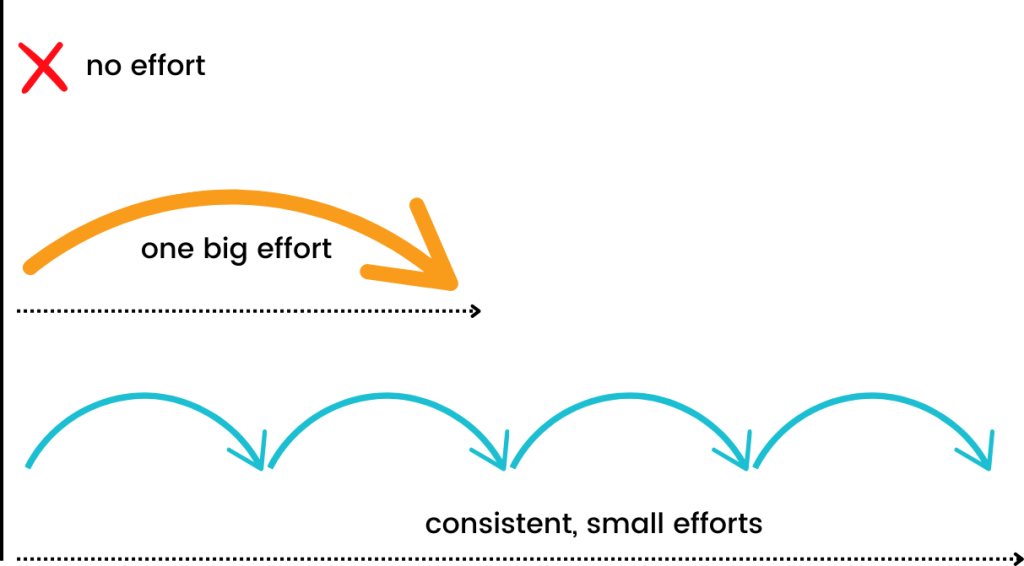Goals rely on systems and habits to turn aspirations into reality, and at the core of every effective habit is consistency. Habits are built through consistent, small actions performed over time. Consistency helps to establish routines, reinforcing behaviors until they become automatic. With each consistent action, you build momentum, confidence, and a foundation for long-term success. This is how systems work: they focus on what you can do daily to stay on track toward your goals. It’s not about making one grand or perfect effort—it’s about sustaining regular efforts over time. Small efforts are easier to practice and you can show up for yourself even when you feel unmotivated or imperfect. Each time you practice a habit, you strengthen the neural pathways in your brain, making it easier to repeat the behavior in the future. This is how systems transform goals into results: through steady, incremental progress.

Consistency Overcomes Perfectionism
Consistency is also a powerful antidote to perfectionism. Perfectionism thrives on the fear of not doing something flawlessly, which often leads to procrastination or avoidance. When you focus on consistency instead of perfection, you create space for progress over time rather than expecting instant success. Consistently engaging in a habit—even imperfectly—teaches you that growth comes from doing, not from waiting to do it perfectly. This mindset helps shift the narrative from “It has to be perfect” to “It has to get done.” For example, writing just one paragraph daily, no matter how messy, will yield more progress than waiting to write the perfect essay in one sitting. With consistency, you shift your mindset to embrace effort and incremental progress, making the process more enjoyable and sustainable.
Creating Habit-focused Action Items
Step 1: Define a Goal and a Supporting Habit
Think of a larger goal you want to achieve. Identify one small habit that will support consistent progress toward that goal. Remember that habits are based on small actions you can do every day.
- Example: Goal: “Improve my physical fitness.”
- Habit: “Do 10 minutes of stretching every morning.”
Step 2: Make It Actionable and Realistic
Break the habit down into a simple, manageable action you can stick to daily. Identify the key decision points that will make it easy to follow through and will reduce friction for the action item.
- Example: “I’ll keep a yoga mat by my bed and stretch as soon as I wake up.”
Step 3: Commit to a Consistency Challenge
Set a goal to practice your habit every day for two weeks. Focus on showing up consistently, not on how much you accomplish or how “perfectly” you perform. Use a habit tracker (a checklist, calendar, or app) to monitor your progress.
- Example: Print a 14-day tracker and check off each day you stretch.
Step 4: Reflect on the Process
At the end of the 14 days, take time to reflect:
- How did focusing on consistency help you build momentum?
- Did removing the pressure to perform perfectly make the habit feel more manageable?
- What adjustments can you make to improve or sustain the habit going forward?
Bonus Step:
Pair your habit with a “trigger” or cue to help you stay consistent. For example, if your goal is to journal daily, link it to an existing routine, such as when you eat breakfast. This connection makes it easier to remember and stick with the habit.
